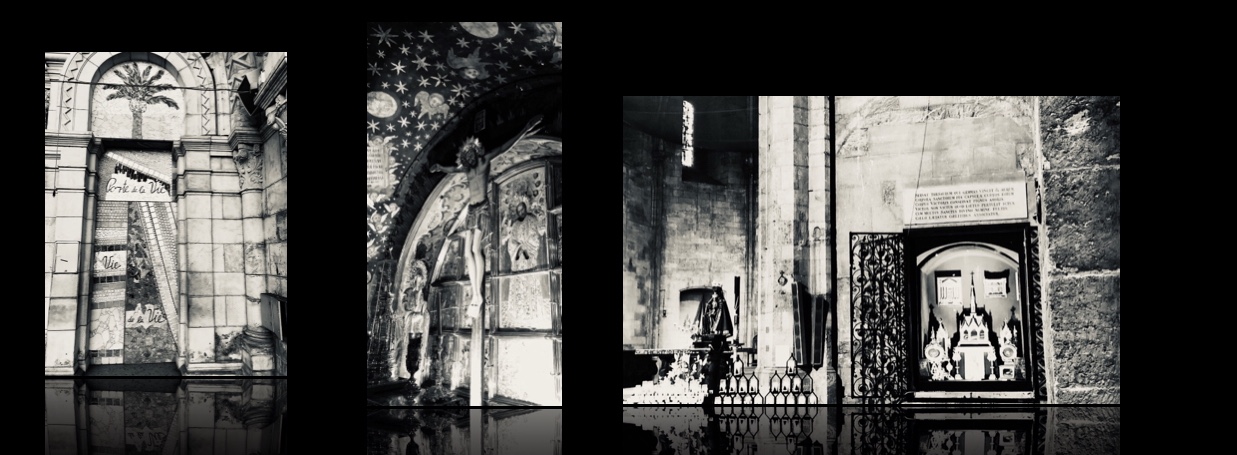During the traditional liturgy of the Holy Sacrifice of the Mass the priest faces the people five times by turning around towards them. Why? These five moments represent the five apparitions of the risen Jesus Christ towards His disciples on Paschal Sunday, as Jacobus de Voragine explains in his Golden Legend.
“Let it be known that he appeared five times on the day of his resurrection (…). The first of his apparitions was to Mary Magdalene, as in John 20: 1-18 and in Mark 16: 9 (…). (…) The Lord‘s second apparition on Easter Day was to the women as they came back from the tomb, when he said to them: ‘All hail!‘ and they approached and took hold of his feet, as we read in the last chapter of Matthew.“
Jacobus de Voragine: The Golden Legend. Readings on the Saints, Princeton University Press 1993, p. 219-220
“Having risen in the morning on the first day of the week, he appeared first to Mary of Magdala from whom he had cast out seven demons.“
Mark 16: 9
“They (i.e. the women) came quickly away from the tomb, filled with awe and great joy, and ran to tell his disciples. And see, coming to meet them, was Jesus, saying, ‘Greetings!‘ And the women came up to him and, clasping his feet, they worshipped him.“
Matthew 28: 8-9
“His third apparition was to Simon Peter, but where and when we do not know (…).“
Jacobus de Voragine: The Golden Legend. Readings on the Saints, Princeton University Press 1993, p. 220
“In the first place I handed on to you what I had myself received, that Christ died for our sins in accordance with the scriptures, that he was buried and was raised up on the third day in accordance with the scriptures, that he was seen by Cephas and then by the Twelve (…).“
1 Corinthians 15: 3-5
This third apparition of the risen Christ to the prince of the apostles is why the third time the priest turns around during Holy Mass it happens “in silence because this turning stands for the apparition to Peter, the place and time of which are not known“ (ibid.).
Jacobus de Voragine then quotes the Scholastic History according to which Peter, after his denial of Christ, “fled to a cavern (…) where, it is said, he wept for three days for having denied Christ, and that there Christ appeared to him and comforted him“ (ibid.).
“His fourth apparition was to the disciples at Emmaus. (…) The fifth was to the disciples gathered together (John 20: 19) (…).“
Jacobus de Voragine: The Golden Legend. Readings on the Saints, Princeton University Press 1993, p. 220
“Now that same day, two of them were on their way to a village called Emmaus, twelve kilometers from Jerusalem, and they were talking together about all that had happened. And it happened that as they were talking together and discussing it, Jesus himself came near and was walking with them; but their eyes were prevented from recognising him.“
Luke 24: 13-16
“In the evening of that same day, the first day of the week, the doors were closed in the room where the disciples were, for fear of the Jews. Jesus came and stood among them and said to them, ‘Peace be with you,‘ and, after saying this, he showed them his hands and his side. The disciples rejoiced at seeing the Lord (…).“
John 20: 19-20
Dominus vobiscum (The Lord be with you) the priest says when turning towards the people during the traditional liturgy, extending his hands…
But these are the apparitions of Christ on Paschal Sunday about which Sacred Scripture is explicit. Yet, the very first one was the one to His mother, to the Blessed Virgin Mary, and the evangelists keep silent about it.
“Christ must first of all have made his mother happy over his resurrection, since she certainly grieved over his death more than the others. He would not have neglected his mother while he hastened to console others. Ambrose also testifies to this in the third book of his De Virginibus, saying: ‘His mother saw the risen Lord, and saw him first and believed first.‘“
Jacobus de Voragine: The Golden Legend. Readings on the Saints, Princeton University Press 1993, p. 221-222

